How Are Smallholder Farmers Involved in Digital Agriculture in Developing Countries: A Case Study from China
Abstract
:1. Introduction
2. Research Background
3. Study Area and Research Methodology
3.1. Study Area
3.2. Research Methodology
4. Case Description
4.1. Agricultural Organization: Formation of Cooperatives and Centralized Land Management
4.2. Deepening the Division of Labor in Agriculture: Agricultural Outsourcing Services and the Application of Agricultural Machinery
4.3. Digital Transformation of Agriculture: Integration of Digital Agricultural Service Platforms
5. Discussion
6. Conclusions
Author Contributions
Funding
Institutional Review Board Statement
Informed Consent Statement
Data Availability Statement
Acknowledgments
Conflicts of Interest
References
- Rapsomanikis, G. The Economic Lives of Smallholder Farmers: An Analysis Based on Household Data from Nine Countries. Available online: http://www.fao.org/3/a-i5251e.pdf (accessed on 27 January 2021).
- Deichmann, U.; Goyal, A.; Mishra, D. Will digital technologies transform agriculture in developing countries? Agric. Econ. 2016, 47, 21–33. [Google Scholar] [CrossRef]
- Jensen, R. The digital provide: Information (technology), market performance, and welfare in the South Indian Fisheries Sector. Q. J. Econ. 2007, 122, 879–924. [Google Scholar] [CrossRef]
- Svenson, J.; Yanagizawa, D. Getting the prices right: The impact of market information service in Uganda. J. Eur. Econ. Assoc. 2009, 7, 435–445. [Google Scholar] [CrossRef] [Green Version]
- Aker, J. Information from markets near and far: Mobile phones and agricultural markets in Niger. Am. Econ. J. Appl. Econ. 2010, 2, 46–59. [Google Scholar] [CrossRef] [Green Version]
- Fafchamps, M.; Minten, B. Impact of SMS-based agricultural information on Indian farmers. World Bank Econ. Rev. 2012, 26, 383–414. [Google Scholar] [CrossRef]
- Tadesse, G.; Bahiigwa, G. Mobile phones and farmers’ marketing decisions in Ethiopia. World Dev. 2015, 68, 296–307. [Google Scholar] [CrossRef] [Green Version]
- Lio, M.; Liu, M.C. ICT and agricultural productivity: Evidence from cross-country data. Agric. Econ. 2006, 34, 221–228. [Google Scholar] [CrossRef]
- Beuermann, D.; McKelvey, C.; Vakis, R. Mobile phones and economic development in rural Peru. J. Dev. Stud. 2012, 48, 1–12. [Google Scholar] [CrossRef]
- Al-Hassan, R.; Egyir, I.; Abakah, J. Farm household level impacts of information communication technology (ICT)-based agricultural market information in Ghana. J. Dev. Agric. Econ. 2013, 5, 161–167. [Google Scholar] [CrossRef] [Green Version]
- Ogutu, S.O.; Okello, J.J.; Otieno, D.J. Impact of information and communication technology-based market information services on smallholder farm input use and productivity: The case of Kenya. World Dev. 2014, 64, 311–321. [Google Scholar] [CrossRef]
- Karippacheril, T.G.; Rios, L.D.; Srivastava, L. Global markets, global challenges: Improving food safety and traceability while empowering smallholders through ICT. In ICT in Agriculture Sourcebook; World Bank: Washington, DC, USA, 2011. [Google Scholar]
- Jack, W.; Suri, T. Risk sharing and transaction costs: Evidence from Kenya’s mobile money revolution. Am. Econ. Rev. 2014, 104, 183–223. [Google Scholar] [CrossRef]
- Willy, D.K.; Yacouba, D.; Hippolyte, A.; Francis, N.; Michael, W.; Tesfamicheal, W. COVID-19 Pandemic in Africa: Impacts on Agriculture and Emerging Policy Responses for Adaptation and Resilience Building. Available online: https://www.farm-d.org/app/uploads/2020/06/TAAT-Policy-Working-Paper-on-COVID19_FINAL-for-Dissemination_May-2020.pdf (accessed on 27 January 2021).
- Fernando, A.J. How Africa Is Promoting Agricultural Innovations and Technologies amidst the COVID-19 Pandemic. Mol. Plant. 2020, 13, 1345–1346. [Google Scholar] [CrossRef] [PubMed]
- Ravis, T.; Notkin, B. Urban bites and agrarian bytes: Digital agriculture and extended urbanization. Berkeley Plan. J. 2020, 31, 100–122. [Google Scholar] [CrossRef]
- FAO. Realizing the Potential of Digitalization to Improve the Agri-Food System: Proposing a New International Digital Council for Food and Agriculture. A Concept Note. Rome. 2020. Available online: http://www.fao.org/3/ca7485en/ca7485en.pdf (accessed on 27 January 2021).
- Fabregas, R.; Kremer, M.; Schilbach, F. Realizing the potential of digital development: The case of agricultural advice. Science 2019, 366, 1–9. [Google Scholar] [CrossRef] [Green Version]
- FAO. A Data Portrait of Smallholder Farmers. 2015. Available online: http://www.fao.org/family-farming/detail/en/c/385074/ (accessed on 27 January 2021).
- Zhao, C. Digital Agricultural in China. Digital Agriculture Forum, Co-Organized by FAO, 5–6 December 2020. Available online: http://www.fao.org/e-agriculture/news/digital-agriculture-forum-2020-inspiration-create-business-real-impact-people-real-needs (accessed on 12 December 2020).
- Trendov, N.M.; Varas, S.; Zeng, M. Digital Technologies in Agriculture and Rural Areas: Status Report. Rome. Licence: Cc by-nc-sa 3, 2019. Available online: http://www.fao.org/3/ca4985en/ca4985en.pdf (accessed on 27 January 2021).
- Baumuller, H. The little we know: An exploratory literature review on the utility of mobile phone-enabled services for smallholder farmers. J. Int. Dev. 2018, 30, 134–154. [Google Scholar] [CrossRef]
- Klerkx, L.; Jakku, E.; Labarthe, P. A review of social science on digital agriculture, smart farming and agriculture 4.0: New contributions and a future research agenda. NJAS Wagening. J. Life Sci. 2019, 90, 100315. [Google Scholar] [CrossRef]
- Wolfert, S.; Ge, L.; Verdouw, C.; Bogaardt, M.-J. Big Data in Smart Farming—A review. Agric. Syst. 2017, 153, 69–80. [Google Scholar] [CrossRef]
- Young, A.A. Increasing Returns and Economic Progress. Econ. J. 1928, 38, 527–542. [Google Scholar] [CrossRef]
- FAO. China Shares Its Approaches and Experiences in Digital Agriculture and E-Commerce Transformation for Its Rural Communities. E-Agriculture. Available online: http://www.fao.org/e-agriculture/news/china-shares-its-approaches-and-experiences-digital-agriculture-and-e-commerce-transformation (accessed on 11 October 2019).
- Luo, B.L. Coase Theorem: Reflection and expansion—Also on the reform and choice of china’s rural land circulation system. Econ. Res. 2017, 52, 178–193. (In Chinese) [Google Scholar]
- Zhang, S.; Sun, Z.; Ma, W.; Valentinov, V. The effect of cooperative membership on agricultural technology adoption in Sichuan, China. China Econ. Rev. 2020, 62, 101334. [Google Scholar] [CrossRef]
- Tsan, M.; Totapally, S.; Hailu, M.; Addom, B.K. The Digitalisation of African Agriculture Report 2018–2019. Wageningen, The Netherlands, CTA. 2019. Available online: https://www.cta.int/en/digitalisation/article/measuring-the-outcomes-of-the-digitalisation-of-african-agriculture-report-2018-2019-sid016f9505d-4461-4fe4-8dc3-df4b7bc1726d (accessed on 27 January 2021).
- Benke, K.; Tomkins, B. Tomkins Future food-production systems: Vertical farming and controlled-environment agriculture. Sustain. Sci. Pract. Policy. 2017, 13, 13–26. [Google Scholar] [CrossRef] [Green Version]
- Rose, D.C.; Wheeler, R.; Winter, M.; Lobley, M.; Chivers, C.-A. Agriculture 4.0: Making it work for people, production, and the planet. Land Use Policy 2020, 100, 104933. [Google Scholar] [CrossRef]
- Sanchez, P.A.; Ahamed, S.; Carré, F.; Hartemink, A.E.; Hempel, J.; Huising, J.; Lagacherie, P.; McBratney, A.B.; McKenzie, N.J.; Mendonça-Santos, M.L.; et al. Digital Soil Map of the World. Science 2009, 325, 680–681. [Google Scholar] [CrossRef] [PubMed] [Green Version]
- Basso, B.; Antle, J. Digital agriculture to design sustainable agricultural systems. Nat. Sustain. 2020, 3, 254–256. [Google Scholar] [CrossRef]
- Faulkner, A.; Cebul, K. Agriculture Gets Smart: The Rise of Data and Robotics. São Francisco: Cleantech Group. 2014. Available online: https://www.cleantech.com/wp-content/uploads/2014/07/Agriculture-Gets-Smart-Report.pdf (accessed on 27 January 2021).
- Alley, R.B.; Emanuel, K.A.; Zhang, F. Advances in weather prediction. Science 2019, 363, 342–344. [Google Scholar] [CrossRef] [Green Version]
- Burke, M.; Lobell, D.B. Satellite-based assessment of yield variation and its determinants in smallholder African systems. Proc. Natl. Acad. Sci. USA 2017, 114, 2189–2194. [Google Scholar] [CrossRef] [Green Version]
- Rotz, S.; Duncan, E.; Small, M.; Botschner, J.; Dara, R.; Mosby, I.; Reed, M.; Fraser, E.D.G. The politics of digital agricultural technologies: A preliminary review. Sociol. Rural. 2019, 59, 203–229. [Google Scholar] [CrossRef]
- European Commission. European Union Funds Digital Research and Innovation for Agriculture to Tackle Societal Challenges. 2018. Available online: https://ec.europa.eu/info/news/european-union-funds-digital-research-and-innovation-agriculture-tackle-societal-challenges_en (accessed on 27 January 2021).
- Carolan, M. ‘Smart’ farming techniques as political ontology: Access, sovereignty and the performance of neoliberal and not-so-neoliberal worlds. Sociol. Rural. 2017, 57, 745–764. [Google Scholar] [CrossRef] [Green Version]
- Erickson, B.; Widmar, D.A. Precision Agricultural Services Dealership Survey Results. West Lafayette, Indiana: Purdue University. 2015. Available online: https://agribusiness.purdue.edu/wp-content/uploads/2019/08/2015-crop-life-purdue-precision-dealer-survey.pdf (accessed on 27 January 2021).
- Goedde, L.; Katz, J.; Ménard, A.; Revellat, J. One of the Oldest Industries Must Embrace a Digital, Connectivity-Fueled Transformation in Order to Overcome Increasing Demand and Several Disruptive Forces. 2020. Available online: https://www.mckinsey.com/industries/agriculture/our-insights/agricultures-connected-future-how-technology-can-yield-new-growth# (accessed on 27 January 2021).
- Li, D. China Rural Informatization Development Report (2019); China Machine Press: Beijing, China, 2020. (In Chinese) [Google Scholar]
- IFPRI; CCAP; ADB. Information and Communication Technology for Agriculture in the People’s Republic of China; Asian Development Bank: Manila, Philippines, 2019. [Google Scholar]
- Research Group of Information Center of Ministry of Agriculture and Rural Affairs of China. Development trend and promotion path of digital agriculture. Economic Daily. 2020. Available online: http://www.qstheory.cn/economy/2020-04/02/c_1125803875.htm (accessed on 27 January 2021). (In Chinese).
- China Academy of Information and Communications Technology. White Paper on Digital Economy Development and Employment in China. 2019. Available online: http://www.caict.ac.cn/kxyj/qwfb/bps/201904/P020190417344468720243.pdf (accessed on 27 January 2021). (In Chinese).
- Bureau of Statistics of Chongzhou County. Statistical Bulletin of National Economic and Social Development of Chongzhou County, 2019. 2020. Available online: http://gk.chengdu.gov.cn/govInfo/detail.action?id=2648806&tn=2 (accessed on 27 January 2021). (In Chinese)
- Yang, K.; Hu, C.; Luo, Y. Analysis on the development path of county digital agriculture in rural areas: Taking Chengdu as an example. Informatiz. China Constr. 2020, 61–63. (In Chinese) [Google Scholar]
- Golden, B.R. The past is the past—Or is it? The use of retrospective accounts as indicators of past strategy. Acad. Manag. J. 1992, 35, 848–860. [Google Scholar] [CrossRef]
- Miller, C.C.; Cardinal, L.B.; Glick, W.H. Retrospective reports in organizational research: A reexamination of recent evidence. Acad. Manag. J. 1997, 40, 189–204. [Google Scholar] [CrossRef]
- Dougherty, D. Understanding new markets for new products. Strateg. Manag. J. 1990, 11, 59–78. [Google Scholar] [CrossRef]
- Schwenk, C.R. The use of participant recollection in the modeling of organizational decision process. Acad. Manag. Rev. 1985, 10, 496–503. [Google Scholar] [CrossRef]
- Eisenhardt, K.M. Building theories from case study research. Acad. Manag. Rev. 1989, 14, 532–550. [Google Scholar] [CrossRef]
- Miles, M.B.; Huberman, A.M. Qualitative Data Analysis: An Expanded Sourcebook, 2nd ed.; Thousand Aaks: Sage, CA, USA, 1994. [Google Scholar]
- Santos, F.M.; Eisenhardt, K.M. Constructing markets and shaping boundaries: Entrepreneurial power in nascent fields. Acad. Manag. J. 2009, 52, 643–671. [Google Scholar] [CrossRef] [Green Version]
- Feder, G.; O’Mara, G.T. Farm size and the diffusion of green revolution technology. Econ. Dev. Cult. Chang. 1981, 30, 59–76. [Google Scholar] [CrossRef]
- Wu, Y.; Xi, X.; Tang, X.; Luo, D.; Gu, B.; Lam, S.K.; Vitousek, P.M.; Chen, D. Policy distortions, farm size, and the overuse of agricultural chemicals in China. Proc. Natl. Acad. Sci. USA 2018, 115, 7010–7015. [Google Scholar] [CrossRef] [Green Version]
- Luo, B. Service scale management: Vertical division of labor, horizontal division of labor and specialization of connected farmland. Chin. Rural Econ. 2017, 11, 2–16. (In Chinese) [Google Scholar]
- Chongzhou County Municipal Committee of the Communist Party of China, Chongzhou County Municipal People’s Government. Introduction of “1+4” New Agricultural Management System in Chongzhou County. 2013. Available online: http://www.cdstats.chengdu.gov.cn/htm/detail_26535.html (accessed on 27 January 2021). (In Chinese)
- Becker, G.S.; Murphy, K.M. The division of labor, coordination costs, and knowledge. Q. J. Econ. 1992, 107, 1137–1160. [Google Scholar] [CrossRef]
- USDA. The Number of U.S. Farms Continues to Decline Slowly. 2020. Available online: https://www.ers.usda.gov/data-products/chart-gallery/gallery/chart-detail/?chartId=58268 (accessed on 10 November 2020).
- Nature Editorial. Ending hunger: Science must stop neglecting smallholder farmers. Nature 2020, 586, 336. [Google Scholar] [CrossRef] [PubMed]
- China Land Issues Research Group, Tianze Economic Research Institute. Land transfer and agricultural modernization. Manag. World 2010, 66–85. (In Chinese) [Google Scholar] [CrossRef]
- Ministry of Agriculture and Rural Affairs of China, China Rural Management Statistical Annual Report; China Agriculture Press: Beijing, China, 2019.
- Ministry of Agriculture and Rural Affairs of the People’s Republic of China. Socialized Agricultural Service Organizations Are Expected to Exceed 900,000 by the End of This Year. 2020. Available online: http://www.moa.gov.cn/xw/zwdt/202012/t20201218_6358374.htm (accessed on 18 December 2020). (In Chinese)
- Carolan, M.S. More-than-representational knowledge/s of the countryside: How we think as bodies. Sociol. Rural. 2008, 48, 408–422. [Google Scholar] [CrossRef]
- Lobley, M.; Winter, R. Wheeler the Changing World of Farming in Brexit UK-Perspectives on Rural Policy and Planning; CRC Press: Routledge, UK, 2018; pp. 1–246. [Google Scholar]
- Burton, R.J.F.; Kuczera, C.; Schwarz, G. Exploring farmers’ cultural resistance to voluntary agri-environmental schemes. Sociol. Rural. 2008, 48, 16–37. [Google Scholar] [CrossRef]
- Source: National Bureau of Statistics of China, Number of Employed Persons by Three Industries. 2019. Available online: https://data.stats.gov.cn/easyquery.htm?cn=C01 (accessed on 27 January 2021).
- He, X. Agriculture, rural areas and farmers in the context of reform—Interpretation of the articles concerning agriculture in the “Decision” of the Third Plenary Session of the 18th Central Committee. Peoples Forum Acad. Front. 2014, 72–95. (In Chinese) [Google Scholar] [CrossRef]
- Bronson, K. Looking through a responsible innovation lens at uneven engagements with digital farming. NJAS Wagening. J. Life Sci. 2019, 90, 100294. [Google Scholar] [CrossRef]
- Lioutas, E.D.; Charatsari, C.; La Rocca, G.; De Rosa, M. Key questions on the use of big data in farming: An activity theory approach. NJAS Wagening. J. Life Sci. 2019, 90, 100297. [Google Scholar] [CrossRef]
- Regan, A. ‘Smart farming’ in Ireland: A risk perception study with key governance actors. NJAS Wagening. J. Life Sci. 2019, 90, 100292. [Google Scholar] [CrossRef]
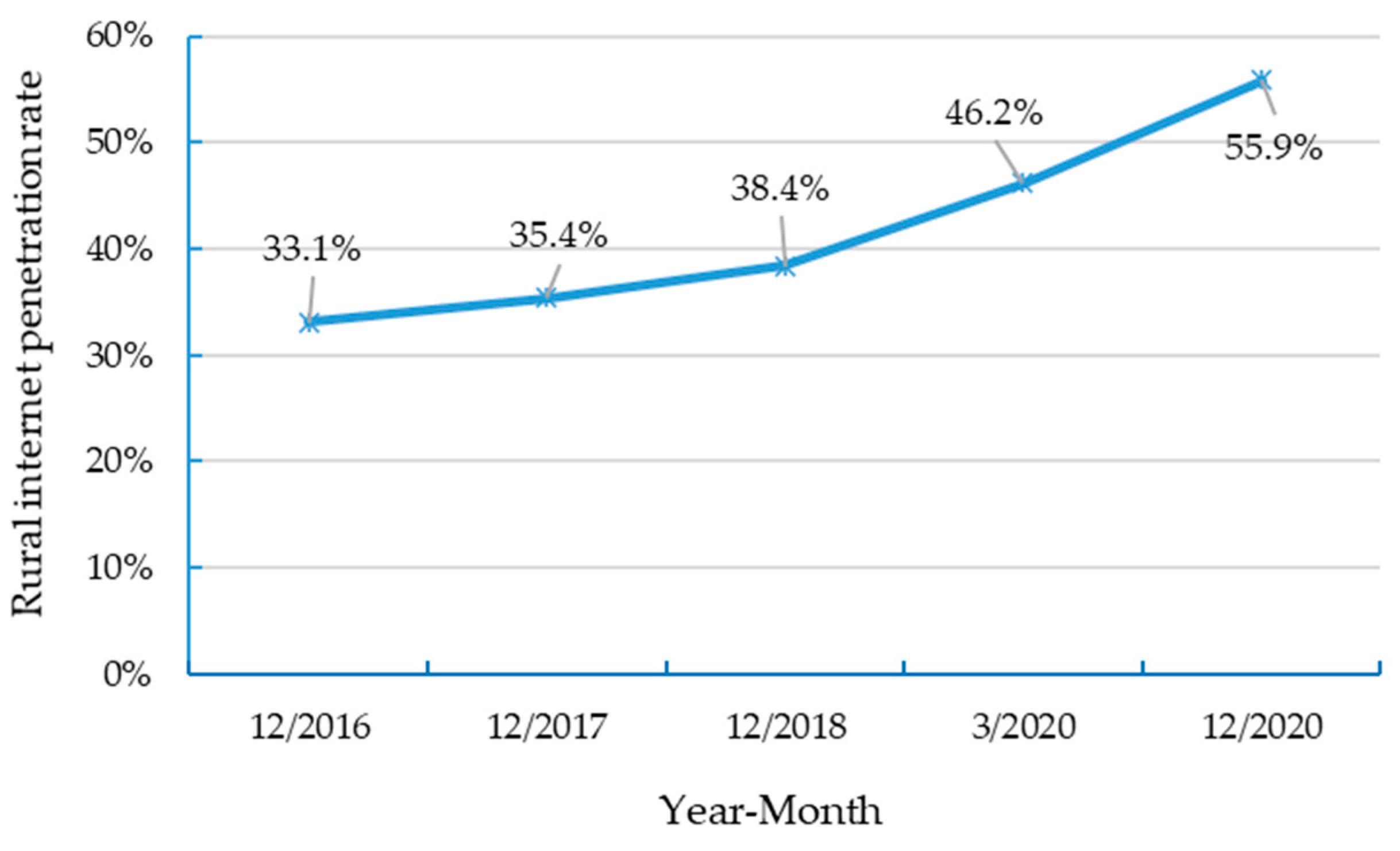
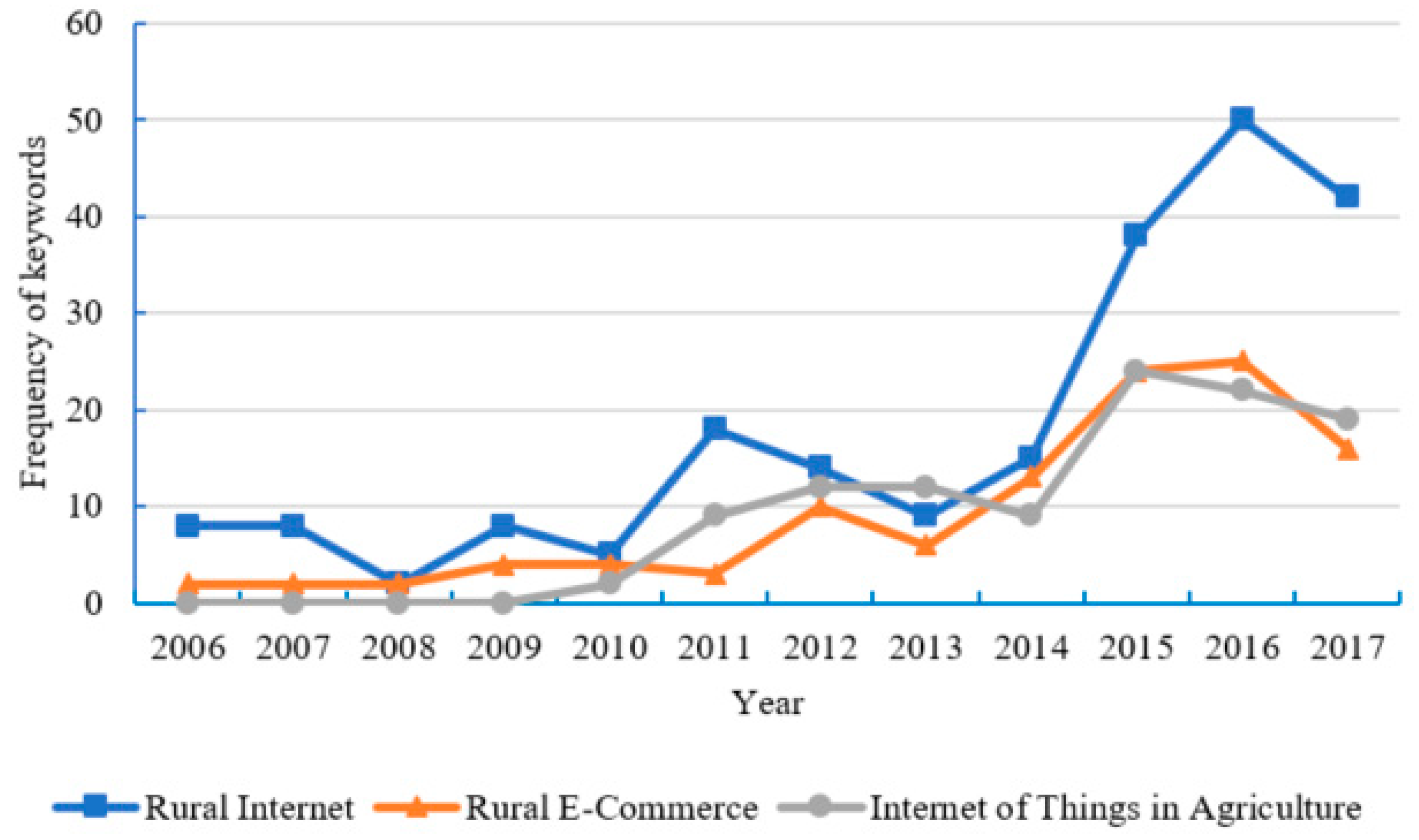
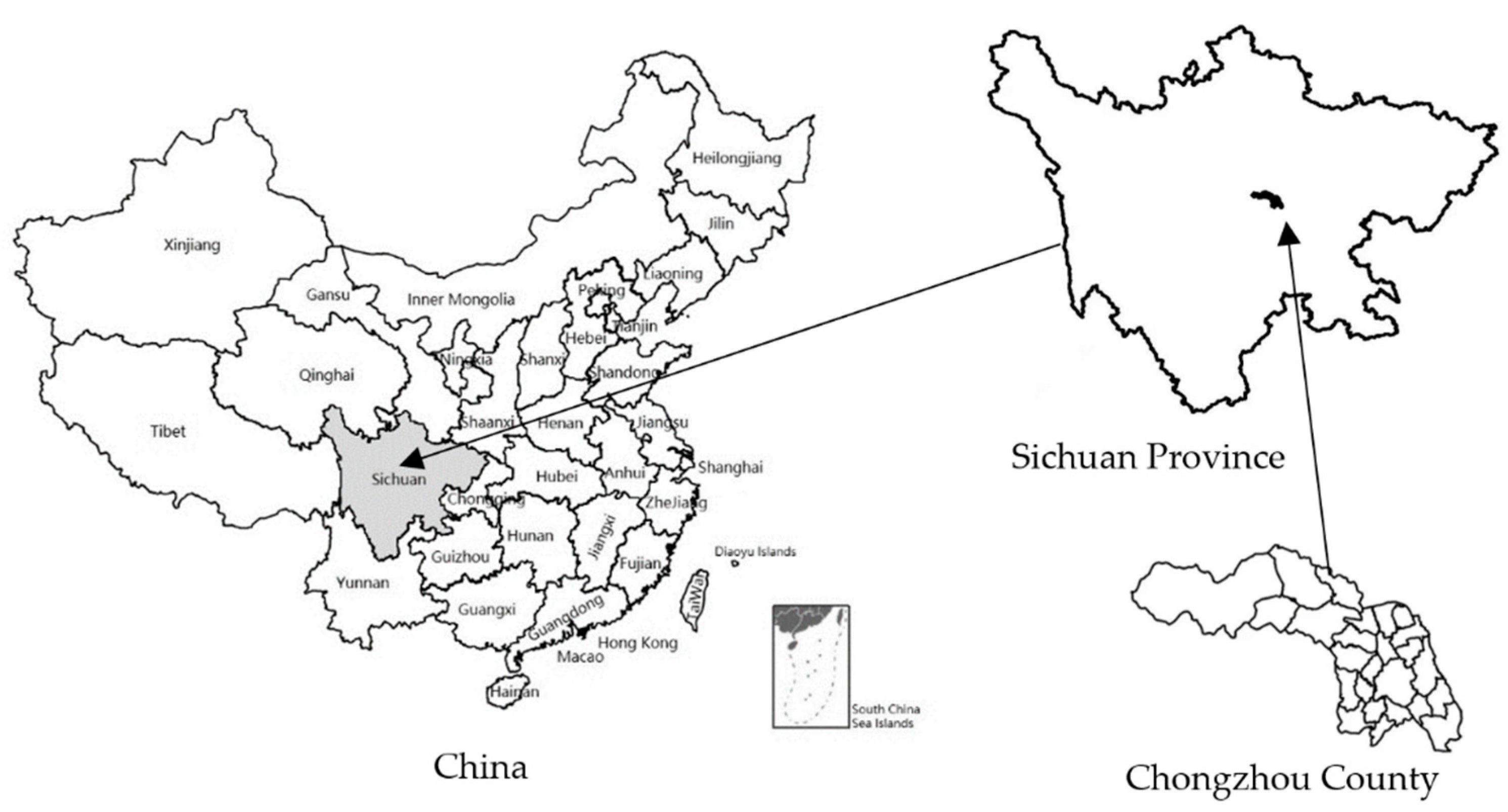

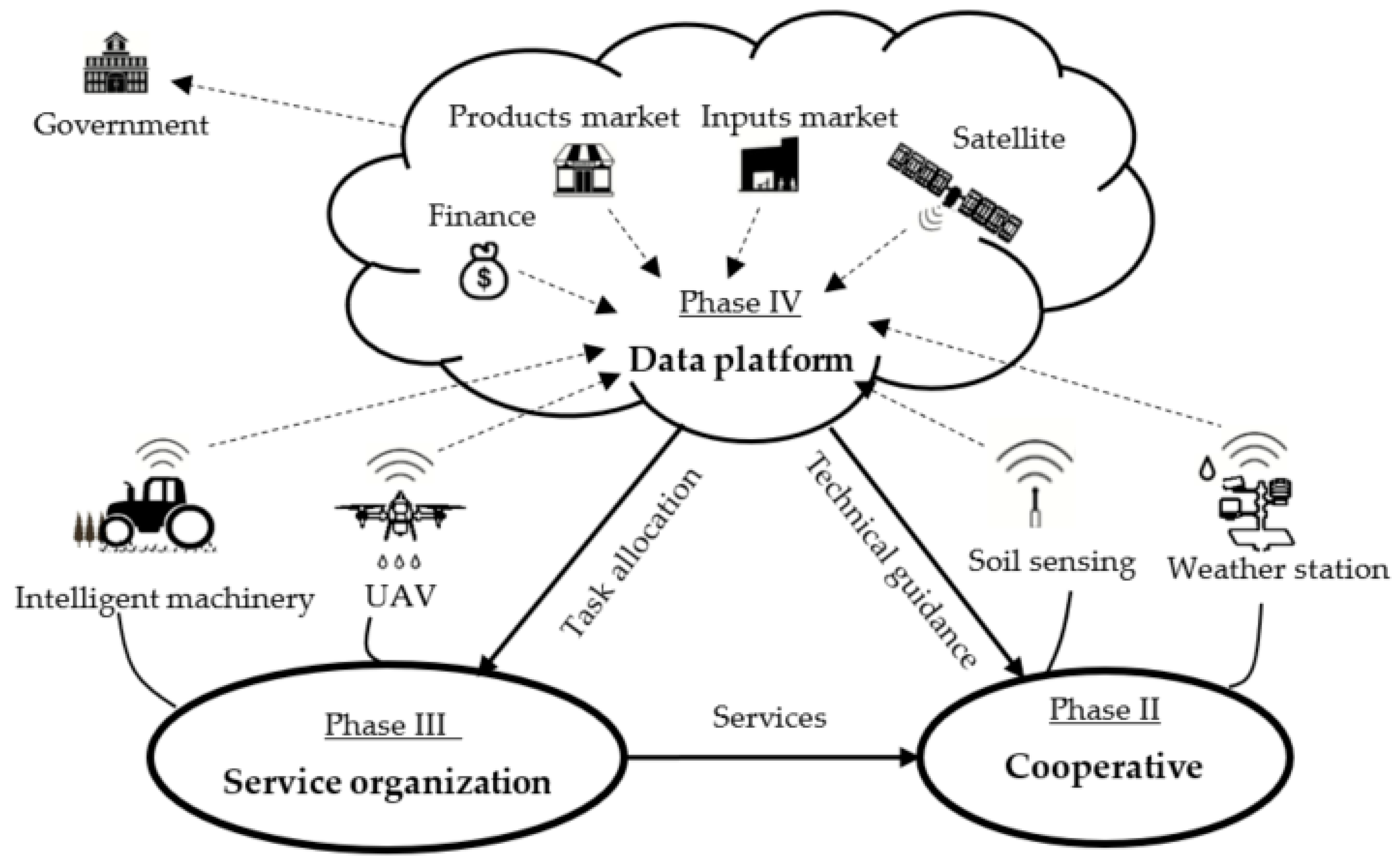
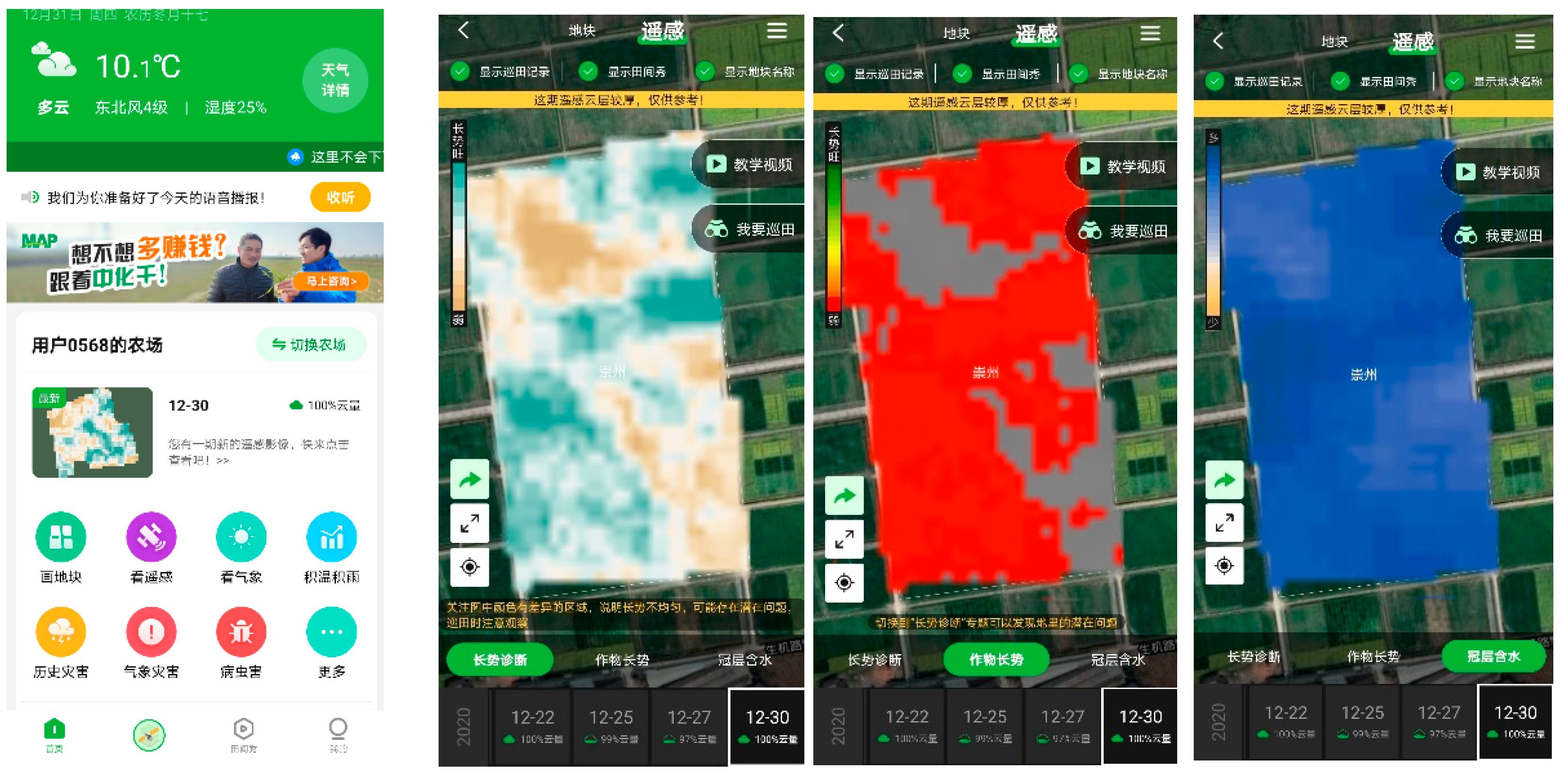
| Type of Interviewees | Number of Interviewees | Interview Content |
|---|---|---|
| Government officials in the agricultural department | More than 20 |
|
| Farmland cooperative COO | 5 |
|
| Agricultural service organization COO | 3 |
|
| Small-scale farmer | More than 30 |
|
| Manager and technician of the digital agriculture platform company | 2 |
|
Publisher’s Note: MDPI stays neutral with regard to jurisdictional claims in published maps and institutional affiliations. |
© 2021 by the authors. Licensee MDPI, Basel, Switzerland. This article is an open access article distributed under the terms and conditions of the Creative Commons Attribution (CC BY) license (http://creativecommons.org/licenses/by/4.0/).
Share and Cite
Xie, L.; Luo, B.; Zhong, W. How Are Smallholder Farmers Involved in Digital Agriculture in Developing Countries: A Case Study from China. Land 2021, 10, 245. https://doi.org/10.3390/land10030245
Xie L, Luo B, Zhong W. How Are Smallholder Farmers Involved in Digital Agriculture in Developing Countries: A Case Study from China. Land. 2021; 10(3):245. https://doi.org/10.3390/land10030245
Chicago/Turabian StyleXie, Lin, Biliang Luo, and Wenjing Zhong. 2021. "How Are Smallholder Farmers Involved in Digital Agriculture in Developing Countries: A Case Study from China" Land 10, no. 3: 245. https://doi.org/10.3390/land10030245






